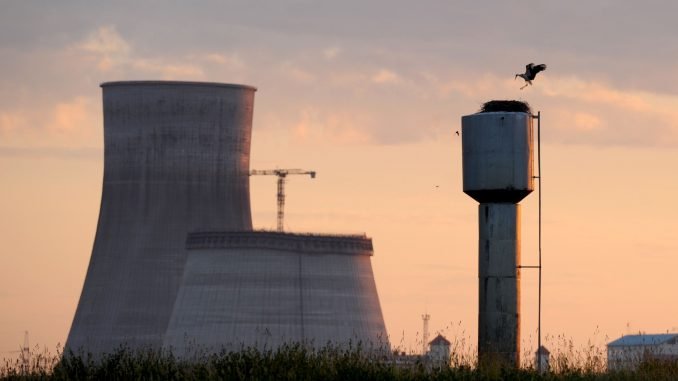
“If the body is indeed replaced, it will mean that Belarus admits that construction of the Astravyets utility is marred with safety issues. We welcome the first step to admit that not everything is going well, but this is not enough,” Butkevičius’ spokeswoman Evelina Butkutė-Lazdauskienė cited Butkevičius.
In her words, Butkevičius has not revised his stance that Belarus should conduct stress tests of the nuclear utility under construction merely 50 km from the Lithuanian capital Vilnius and present the results to Lithuania.
Lithuania’s Energy Minister Rokas Masiulis told BNS that replacing the tumbled nuclear reactor body was the only correct move, emphasizing that Belarus should allow monitoring of the course of the construction by independent experts.
“This is a correct decision, however, we are still waiting for Belarus to demonstrate a neighbourly attitude and improve the entire construction monitoring process to include international observers to prevent such things from happening again and, in case of them taking place, notify us immediately, not after a few weeks,” Masiulis said.
Earlier on Thursday, Belarus’ Energy Minister Vladimir Potupchik stated that the body of the Astravyets reactor would be replaced. Meanwhile, the Belarusian monitoring institution, Gosatomnadzor, said it had not yet received an official confirmation about the plans to replace the reactor body. Russia’s Rosatom company building the Astravyets nuclear plant is also unaware of the Belarusian decision.
After the body of the Astravyets nuclear reactor tumbled on July 10, the Belarusian Energy Ministry suspended assembly work at the utility. Rosatom admitted the fact of the incident, emphasizing that the equipment had not been affected but pledged to replace the body, if requested by Belarus.
Built some 50 km from Vilnius, the Astravyets utility will include two reactors, 1,200 megawatts (MW) each. The first power block should be launched in 2018, with the second switched on in 2020.

Be the first to comment